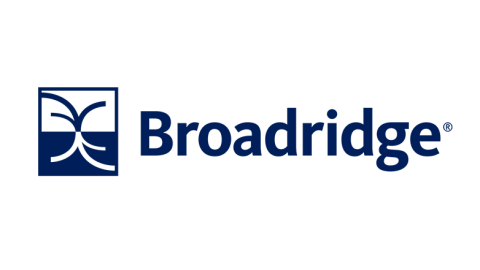Designing Effective AML Training Programs
To combat the ever-evolving landscape of financial crime, designing effective Anti-Money Laundering (AML) training programs is essential. These programs play a critical role in educating employees about the laws, regulations, and internal policies necessary to detect and prevent money laundering and other financial crimes. By instilling a strong culture of compliance and vigilance, organizations can protect themselves and contribute to the broader fight against illicit activities.
Importance of AML Training
AML training programs are crucial in fostering a well-informed workforce capable of identifying and reporting suspicious activities. They serve as a proactive measure to mitigate the risk of money laundering and protect the institution from potential legal, reputational, and financial consequences. By increasing employee awareness of AML laws and regulations, organizations can establish a robust defense against illicit financial activities.
Objectives of AML Training Programs
The objectives of an AML training program encompass various aspects, all aimed at promoting compliance, risk mitigation, and a strong organizational culture of vigilance. These objectives include:
- Educating employees: A primary objective is to ensure that employees understand the laws and regulations governing money laundering, terrorist financing, and other financial crimes. Training should cover topics such as recognizing and reporting suspicious activity, customer due diligence, and sanctions compliance (Alessa).
- Increasing awareness of risks: AML training programs should emphasize the consequences of non-compliance with AML laws, regulations, and internal policies. By highlighting potential legal and reputational risks for both individuals and the organization, employees gain a deeper understanding of the importance of adhering to AML requirements (Alessa).
- Clarifying roles and responsibilities: Training programs should ensure that employees understand their roles and responsibilities in preventing money laundering and terrorist financing. This includes knowing how to identify high-risk customers, conduct proper due diligence, and report suspicious transactions effectively (Alessa).
- Adapting to changes: Regular and ongoing training is crucial for maintaining a strong culture of compliance within an organization. AML training programs should be updated to reflect changes in regulations, emerging risks, and evolving money laundering techniques. This ensures that employees stay informed and equipped to effectively mitigate financial crime risks (Alessa).
By aligning training objectives with these key principles, organizations can design comprehensive AML training programs that empower employees to play an active role in combating money laundering and other financial crimes. Next, we will explore the key elements and components that should be incorporated into these programs.
Key Elements of AML Training Programs
To design effective AML training programs, certain key elements need to be incorporated. These elements establish the foundation for a robust and comprehensive training program that equips employees with the necessary knowledge and skills to combat money laundering effectively.
Establishing a Compliance Culture
At the core of an effective AML training program is the establishment of a compliance culture within the organization. This entails fostering a culture where compliance with anti-money laundering regulations is ingrained in the values, attitudes, and behaviors of all employees. By setting the tone at the top and emphasizing the importance of compliance, organizations can create an environment that promotes vigilance against money laundering activities. This includes providing clear guidance on the organization’s commitment to AML compliance and communicating the consequences of non-compliance.
Appointing a Compliance Officer
One of the key elements of an AML training program is the appointment of a dedicated compliance officer. This individual is responsible for overseeing the organization’s AML program, ensuring its effectiveness, and serving as a point of contact for AML-related matters. The compliance officer plays a crucial role in implementing and monitoring AML policies, conducting risk assessments, and coordinating training efforts. Their expertise and knowledge contribute significantly to the success of the AML training program.
Developing a Written Compliance Policy
A written compliance policy forms the backbone of an effective AML training program. This policy outlines the organization’s commitment to AML compliance, provides guidance on regulatory requirements, and defines the roles and responsibilities of employees in detecting and reporting suspicious activities. The policy should be written clearly, explaining the reasons behind compliance requirements, providing examples to illustrate expectations, and using a positive tone. It should also outline how the organization will address AML risks, conduct due diligence, and maintain ongoing monitoring and reporting mechanisms. By having a well-defined compliance policy, organizations can ensure consistency and clarity in their AML efforts.
By incorporating these key elements into the design of AML training programs, organizations can lay the foundation for a successful and effective training initiative. These elements help establish a culture of compliance, appoint a dedicated compliance officer, and provide clear guidelines through a written compliance policy. Such measures are essential for organizations to fulfill their obligations in combatting money laundering and adhering to regulatory requirements.
Tailoring AML Training Programs
To design effective AML training programs, it is crucial to tailor the content to meet the specific needs of individuals within an organization. This includes providing role-specific training and ensuring relevance and practical application of the training material.
Role-Specific Training
Effective AML training programs recognize that different roles within an organization have varying levels of exposure and responsibilities when it comes to anti-money laundering efforts. Tailoring training to specific roles helps employees understand their unique obligations and equips them with the knowledge and skills necessary to fulfill their AML-related duties.
For example, front-line staff who interact directly with customers should receive training that focuses on recognizing suspicious activities and conducting thorough customer due diligence. On the other hand, compliance officers and managers may require more in-depth training on regulatory requirements, risk management, and reporting obligations.
By providing role-specific training, organizations can ensure that employees receive the necessary knowledge and tools to effectively contribute to the institution’s overall AML compliance efforts.
Relevance and Practical Application
AML training programs should be designed to be relevant and practical for employees in their day-to-day work. This means tailoring the training content to address the specific risks and challenges faced by the organization and its employees.
Training should cover real-life examples and scenarios that employees are likely to encounter, allowing them to apply their knowledge and skills in practical situations. This approach helps employees understand how AML principles and procedures relate to their specific roles and enables them to make informed decisions when faced with potential money laundering risks.
By emphasizing the relevance and practicality of the training material, organizations can enhance employees’ understanding of AML concepts and improve their ability to detect, prevent, and report suspicious activities effectively.
To ensure that training remains up to date and aligned with evolving AML regulations and best practices, organizations should regularly review and update their training programs. This ensures that employees are equipped with the most current knowledge and techniques in combating money laundering and terrorist financing activities. By cultivating a culture of compliance through tailored and practical training, organizations can strengthen their overall AML efforts and protect themselves from financial crime risks.
For more information on designing effective AML training programs, you may refer to our articles on effective AML training methods, AML training program design, and AML training best practices.
Components of AML Training Programs
To design an effective AML training program, it is essential to incorporate specific components that cover key areas related to anti-money laundering regulations and practices. The following components play a crucial role in ensuring that employees are equipped with the necessary knowledge and skills to combat financial crime.
Recognizing Suspicious Activities
One of the primary objectives of AML training programs is to educate employees on recognizing and reporting suspicious activities. Training should focus on enhancing their ability to identify red flags and indicators of potential money laundering or terrorist financing activities. By providing practical examples and case studies, employees can develop a better understanding of what constitutes suspicious behavior in different contexts.
Through interactive exercises, employees can learn how to analyze transactions, customer profiles, and patterns to detect anomalies that may indicate illicit activities. This component of AML training helps instill a sense of vigilance and empowers employees to play an active role in preventing financial crimes.
Customer Due Diligence
Customer due diligence (CDD) is a critical aspect of AML compliance. A robust AML training program should cover the importance of conducting thorough due diligence when onboarding new customers and periodically reviewing existing customer relationships. Employees should be trained on the various elements of CDD, such as verifying customer identities, assessing risk levels, and monitoring customer transactions.
Training should emphasize the significance of gathering accurate and up-to-date customer information, including beneficial ownership details. Employees should understand the potential risks associated with high-risk customers and the need for enhanced due diligence measures in such cases. By providing practical guidance and scenarios, AML training programs enable employees to apply CDD procedures effectively and mitigate the risk of exposure to illicit activities.
Sanctions Compliance
AML training programs should also include comprehensive training on sanctions compliance. Employees need to understand the importance of complying with international and domestic sanctions regimes to prevent transactions with prohibited individuals, entities, or countries. Training should cover various types of sanctions, including those imposed by governments, international organizations, and regulatory bodies.
Employees should be educated on the specific sanctions lists, such as the Office of Foreign Assets Control (OFAC) list in the United States, and the procedures for screening customer transactions against these lists. Training programs should emphasize the potential legal and reputational risks associated with non-compliance and the severe consequences that can result from engaging in prohibited activities.
By focusing on these key components within AML training programs, organizations can equip their employees with the knowledge and skills necessary to effectively combat money laundering, terrorist financing, and other financial crimes. Regular updates and reinforcement of training materials are crucial to ensure that employees stay abreast of the latest developments in AML regulations and best practices.
Ongoing Training and Updates
To ensure the effectiveness of Anti-Money Laundering (AML) training programs, it is essential to provide ongoing training and stay updated with the latest AML developments. This ongoing approach helps organizations to cultivate a strong culture of compliance and adapt to the evolving landscape of financial crime.
Staying Updated with AML Developments
Regular and up-to-date training is crucial to keep employees informed about the latest AML developments, regulations, and best practices. Changes in regulations, emerging risks, and evolving money laundering techniques require organizations to continuously update their training programs to effectively mitigate financial crime risks. By staying informed, employees can better understand new threats and regulatory requirements, ensuring their knowledge remains current and relevant.
To stay updated, organizations should establish a process for monitoring and reviewing AML developments. This may include subscribing to industry newsletters, participating in webinars, attending conferences, and engaging with regulatory bodies. By staying abreast of the latest trends and regulatory changes, organizations can ensure that their training programs reflect the most current information.
Cultivating a Culture of Compliance
Maintaining a strong culture of compliance is essential in the fight against money laundering. Ongoing AML training plays a significant role in fostering this culture within an organization. Regular training programs help employees understand the importance of their role in preventing money laundering and the significance of their vigilance (KYC2020).
By emphasizing the importance of reporting suspicious activities and providing practical examples, training programs encourage employees to be proactive and vigilant in identifying potential money laundering activities. Ongoing training also reinforces the organization’s commitment to combating financial crime and helps create a sense of responsibility among employees.
To further cultivate a culture of compliance, organizations should promote open lines of communication where employees feel comfortable reporting suspicious activities. This can be accomplished through anonymous reporting channels, clear reporting procedures, and regular reminders about the importance of reporting. By fostering a culture that encourages reporting and vigilance, organizations can enhance their AML efforts.
Regular assessments and evaluations of AML training programs are crucial to measure effectiveness, identify gaps, and make necessary improvements (ACA Global). Metrics such as completion rates, test scores, and employee feedback can provide valuable insights into the success of the training program. By continuously evaluating and refining training programs, organizations can ensure that their AML efforts remain effective in combating financial crime.
In summary, ongoing training and staying updated with AML developments are essential components of effective AML training programs. By regularly updating training materials and cultivating a culture of compliance, organizations can equip employees with the knowledge and skills needed to detect, prevent, and report suspicious activities.
Enhancing AML Training Effectiveness
To ensure the effectiveness of Anti-Money Laundering (AML) training programs, it is crucial to incorporate various strategies that engage participants and facilitate practical learning. Two effective methods for enhancing AML training are using scenarios and case studies, along with real-life examples for practical insights.
Using Scenarios and Case Studies
Integrating scenarios and case studies into AML training programs provides participants with the opportunity to apply their knowledge to real-world situations. Scenarios simulate potential money laundering scenarios, allowing learners to analyze and identify red flags that may indicate suspicious activities. By engaging participants in these interactive exercises, they develop critical thinking skills and gain a deeper understanding of how money laundering schemes may operate.
Case studies, on the other hand, provide learners with real-life examples of money laundering cases that have occurred in various industries and jurisdictions. These case studies highlight the tactics employed by criminals and the consequences faced by organizations that failed to detect or report suspicious activities. By examining these real cases, participants can learn from past mistakes and understand the importance of vigilance in combating money laundering.
Real-Life Examples for Practical Insights
In addition to scenarios and case studies, incorporating real-life examples into AML training programs offers practical insights into the detection and prevention of money laundering activities. These examples can include recent news articles, regulatory enforcement actions, or industry-specific instances of money laundering. By showcasing real-life examples, participants can see firsthand how money laundering schemes operate in different contexts and industries.
Real-life examples also help participants understand the importance of reporting suspicious activities promptly and the procedures to follow when filing a suspicious activity report (SAR). They highlight the consequences of non-compliance with AML regulations and emphasize the role that each individual plays in combating money laundering.
By using scenarios, case studies, and real-life examples, AML training programs become more engaging and effective. These methods allow participants to apply their knowledge, enhance their analytical skills, and gain practical insights into the detection and prevention of money laundering activities. It is important for organizations to regularly update their training materials with new scenarios, case studies, and examples to keep the content relevant and aligned with the evolving landscape of money laundering.
Assessing and Evaluating AML Training Programs
To ensure the effectiveness of AML training programs, regular assessments and evaluations are crucial. These evaluations help measure the training’s impact, identify any gaps or weaknesses, and make necessary improvements. By monitoring and measuring the effectiveness of the training, organizations can ensure that their employees are equipped with the knowledge and skills to detect and prevent money laundering activities effectively.
Measuring Training Effectiveness
Measuring the effectiveness of AML training programs can be done through various metrics and indicators. Some common metrics used to assess training effectiveness include:
- Completion Rates: Tracking the percentage of employees who have completed the training program provides insights into the overall engagement and participation levels. High completion rates indicate a strong commitment to AML training.
- Test Scores: Conducting assessments or quizzes after the training allows organizations to gauge employees’ understanding of the AML concepts and regulations. Test scores help identify areas where additional training or clarification may be needed.
- Feedback from Employees: Collecting feedback from employees about the training program provides valuable insights into the training’s strengths and weaknesses. Surveys or feedback forms can be used to gather feedback on the content, delivery, and overall effectiveness of the training.
Identifying Gaps and Making Improvements
Regular assessments and evaluations of AML training programs are essential to identify any gaps or weaknesses in the training content or delivery methods. By identifying these gaps, organizations can make necessary improvements to enhance the effectiveness of the program. Some key steps to identify and address gaps include:
- Assessing Content Relevance: Reviewing the training content to ensure it aligns with the latest AML regulations and best practices. Regular updates and revisions to the training material help ensure its accuracy and relevance.
- Analyzing Test Results: Analyzing test scores and performance data can identify specific areas where employees may be struggling or lacking understanding. This information can guide the development of targeted training interventions.
- Monitoring Employee Performance: Regularly monitoring employee performance in detecting and reporting suspicious activities can provide insights into the practical application of the training. Identifying any performance gaps can guide additional training or coaching efforts.
- Seeking Employee Feedback: Encouraging employees to provide feedback on the training program helps to capture their perspectives and insights. This feedback can reveal areas where the training may need improvement or where additional support may be required.
By consistently assessing and evaluating AML training programs, organizations can ensure that their training efforts are effective and aligned with their compliance objectives. This iterative process of measurement, identification of gaps, and improvement helps create a robust and impactful AML training program.







